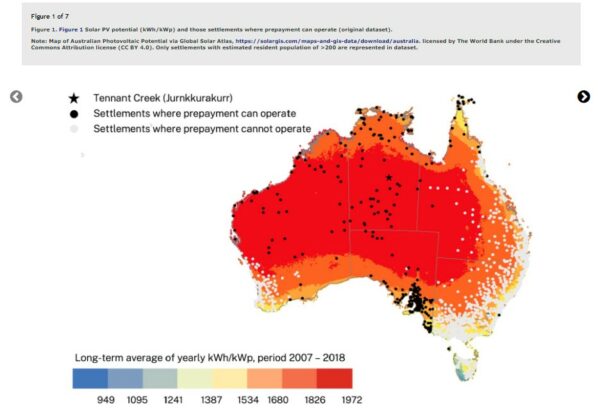NEWS: Why isn’t there solar…?
Why are there no solar systems on remote community rooftops…
When “over 3.4 million Australian houses now have rooftop solar, often subsidised by government incentives”?
As questioned again in a recent article in The Conversation, why are Indigenous communities – households who experience high levels of energy insecurity, disconnections and rental stress – still largely without rooftop solar?
Solar has been largely proven as an effective method to generate household power and reduce energy costs for tenants. The recent pilot project on Frank Jupurrurla’s house supported by Original Power proves just this. As discussed in the article, the 6.6KW solar array system supplies a third of the house’s power in any given month.
The article discusses further the regulatory barriers restricting a widespread roll-out, all of which can be overcome with will.
As climate change threatens not only the capacity for people to physically live in remote communities, scorching temperatures for extended periods will also impact the mechanical equipment which will be required to keep people cool – generators, air conditioners, local stores, fridges, and freezers.
Alternate, financially sustainable ways for people in remote communities to access power, keep their homes at liveable temperatures and have fridges working to store medicines and food is absolutely necessary today and will be even more so in the future.
How do remote communities pay for their power & what is the status?
Prepaid electricity is the main way in which remote communities access their power. Paper ‘power cards’ bought in pre-set amounts ($10, $20, $50 etc.) from the local store or council are largely used to access the power in these communities generated from localised diesel generators run by Power Water.
In more central areas such as the Alice Springs town camps, a new ‘top up’ system is used to load credit directly onto the meter at a house.
Journal 2. shared below, found that 91% of the 3300 households living in 28 communities in the Northern Territory where prepay is mandated experienced self-disconnection events in the 2018/19 financial year. For nearly three-quarters of households, that happened more than 10 times.
Further organisations, links and reading on this topic –
- Journal – 1. Connected: rooftop solar, prepay and reducing energy insecurity in remote Australia
- Journal – 2. Energy insecurity during temperature extremes in Remote Australia
- Paper – 3. Temperature extremes exacerbate energy insecurity – Australia needs to better support remote Indigenous communities to prepare now
- The First Nations Clean Energy Network are advocates for clean energy projects with resources and guides to assist communities and organisations.
- Tangentyere Council Research Hub (based in Mpwartne/Alice Springs) started investigating the relationship between temperature, electricity use and involuntary self-disconnection in 2018. They know first hand that extreme heat is a big issue, and the number of extreme temperature days in 2018/19 surpassed even the most severe projections of what we could expect under future climate change scenarios.
We welcome beginning with small-scale pilots such as that on Frank Jupurrurla’s house. When pilots are proven to work, the next step is then to introduce the system more widely – we look forward to progress in this space.










